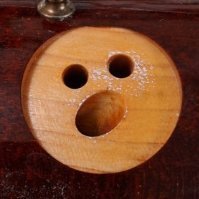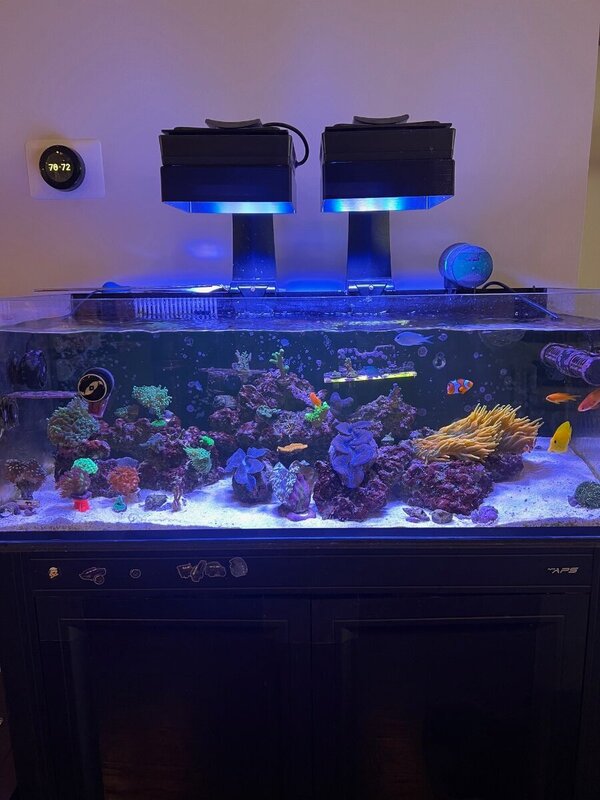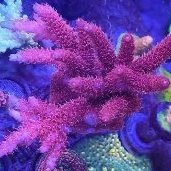All Activity
- Today
-
I am already at 8.34 PH! Crazy how fast the scrubber worked. I may get a PH controller wired to a valve on a tee after the CO2 scrubber to lock in the PH at whatever level I want. I will see where things settle after a few days and go from there. Should be about $200 to set up: Milwaukee Instruments MC122US pH Controller Normally Closed 110VAC-230VAC Motorized Ball Valve,3/8" Stainless steel
-
It is worth checking the pH at least daily to give you an idea of when the media is exhausted. You may find that it works great but not for as long as one may like, so maybe adding a smaller (adjustable) hole in the line between the scrubber and skimmer and taking in ambient air as well, that portion bypassing the scrubber, could slow the rate of media consumption and still give you a bit of a pH boost.
- Yesterday
-
I hooked up the new CO2 scrubber on a closed loop from the skimmer lid. After running it for about two hours the PH is already up to 8.03. I was hitting about 7.01 before I hooked it up, with both readings taken near the skimmer outlet in the refugium.
-
Ok - good plan. I will work on keeping the workshop as CO2 free as I can and hope the reef water off gasses much of the CO2 and the PH comes down to the point where the coralline comes back. Hopefully the new CO2 scrubber helps speed up that process. Thanks again for the help.
-
You mentioned that the display was faring better than the sump in terms of pH, and I think that's an indicator that the issue is CO2 exposure in the sump, specifically, and either with photosynthesis or gas exchange, its being driven off reasonably where it matters more. You may even be able to see a pH gradient in your sump - probably highest at the drain from the tank and lowest at the return point or after the skimmer. I don't think your system will consume a lot of alkalinity, especially in its current state, but hopefully with some increased pH you'll get some coralline back, that and the corals should consume a little (though maybe not a lot.) The alkalinity in the water has some amount of buffering capability, but while adding more can increase that, I don't think going over 13 dKH really makes sense in many cases - it's already on the high side generally run by stony-coral filled systems. Since CO2 sinks, I wonder if an option would be to mount the intake to the skimmer and/or the CO2 scrubber for it high up in the room, just to reduce the concentration where its drawing its input from. While I'm hesitant to recommend it given the value of gas exchange, you could even consider covering a portion of the sump if you made sure to keep the skimmer with its higher air intake operating basically all the time. Another option would be to use an air bubbler and locate the pump somewhere outside the room, basically just forcing some less CO2 saturated air from somewhere else directly into the water. Yet another option could be some kind of refugium or algae scrubber in the sump, especially if it was continuously lit or lit on the reverse of your tank's photoperiod. While I wouldn't expect a massive amount of CO2 removal, you'll get some and some increase in pH, and it's a reasonable way to remove nutrients from a system. It's also worth mentioning that it is normal for pH to fluctuate over the day, generally highest at the peak of photosynthetic activity and lowest towards the end of the night, when it's been the longest since it was happening - make sure your measurements are consistent in terms of when they are taken, or you could be seeing somewhat different results just based on the natural cycle in the tank. The short answer to whether it's still saturated with CO2 is yes - if the pH is low, it's unlikely to be something else. But if it's only low in the sump and not so much in the display, there may be a reasonable amount of it being outgassed into the room the display is in by the flow in the system.
-
Thanks again for your help with this DaJMasta. Yes - I have had this reef tank running for about 35 years now. Moved to a new house a few years ago and made a workshop that houses both the reef tank mechanical systems and a home brewery. The workshop is airtight with no windows to keep the reef tank and beer making smells and humidity out of the main house. I typically make a new batch of beer once every three months. I took a year off and then just made five new batches in the last two months. During the brew day, I run a big exhaust fan to outside the house and not much CO2 is made on brew day, compared to the fermenting process. Each batch of beer expels about 300 gallons of pure CO2 over the two week or so fermentation period. CO2 is about 1.5 time the weight of air so it drops to the floor, where my skimmer is. I don't regularly test my reef tank PH but did after I noticed the tank was stressed out and my other water parameters looked OK. I would speculate that about 40 gallons of pure CO2 per day (on top of regular household CO2) was being absorbed by the 150 gallon reef tank. The reef tank started going south right after I started brewing more. After I made the connection with the very high air CO2 levels, I modified my beer fermenters to vent from the air locks to the outside of the house. I also ran the exhaust fan for two days and left the workshop door open and some windows near the bar with the reef tank open. I also set up some hydroponic plants in the workshop. Moving forward, my air CO2 levels should be much lower. I installed my CO2 scrubber to recycle air from the top of the skimmer so that may help the media last a little longer also. Could my reef water be still super saturated with CO2? If so, will the scrubber help pull CO2 out of the water, or will it just help prevent more CO2 from entering the water? DaJMasta - I like the idea of only using the soda ash to replenish the bicarbonate, but my question is how much will the bicarbonate be depleted in a tank with almost no coral or coraline algae? Would a 100 gallon water change with fish only salt mix help remove the CO2 in the reef water and bring the dHK levels down? I would like to get the PH levels up fairly quickly, but it looks like the levels are already starting to rise a little and the little test corals are starting to open up a little. Maybe slow and steady is best here. Cheers! David
-

New Skimmer New Problems - Help Please
DaJMasta replied to Hugh Gannon's topic in General Discussion
I don't see an image loading, but how is it raising the display if it's in the rear chamber? Is it kicking up debris/bubbles that is blocking the overflow teeth from the display? Do you have it exhausting into the display for some reason? Because it usually takes in a good bit of water, it is normal for the level to change with the skimmer off vs. on, but it shouldn't be increasing the level overall in either chamber beyond the level you setup after its installed. For microbubbles, usually they will reduce with time, but lowering flow can help and sometimes mechanically trapping them where they're coming out (a coarse sponge or bubble trap) helps. If it's possible, you could also try lowering (physically in the tank or the flow) your return pump to hopefully suck fewer of them in. -
I wouldn't raise the alkalinity any higher, but using the soda ash to replenish it should help more with pH than using bicarbonate as things go on. While it should help, I think you're going to be absolutely burning through CO2 scrubber media if your ambient CO2 levels are enough to turn your water acidic in this room. You say you've installed some ventilation, but that may really be the best bet in terms of economics - the CO2 media is not the cheapest to replace. Also worth mentioning that drying the air before the CO2 scrubber can help - especially if the room tends to be humid. I don't think the RO is measuring problematically, at least, until you add the salt to it, it should be about neutral pH (7.0). I don't know what your ventilation system looks like, but something like a forced air exhaust may be a good option, as it would draw air in from other parts of the house. It may be worth getting a CO2 monitor for the room as well, since it sounds like ambient levels may be quite high.
-
I have a 12 gallon AIO nano. I recently added a MagTool Nano AIO Tank protein skimmer for all in one reef tank DC - SQ50. I have had it for one day. I have two problems: 1. It raised the water level in the display area significantly and I don’t know how to decrease this level without lowering the water level in the back chambers to the point where the pump won’t work. 2. SO MANY MICRO BUBBLES (I realize that it’s a new skimmer and it needs time to break in but it’s an excessive amount of bubbles). Any suggestions?
-
My PH is now running about 6.8-7.1. My CO2 scrubber is being delivered today, hopefully that will help some. I erroneously added more Bicarbonate trying to get the PH up, and now my dKH is 13.2. I just got some Soda Ash to replace my Bicarbonate dosing. Should I add any Soda Ash and get both the PH and dKH up? I just did a 50 gal water change on my 150 gal tank, the Reef Crystals mix I tested came in at 13 dKH. Should I pick up some fish only salt mix like Instant Ocean and do 100 gal water change to get the dKH down and then add Soda Ash to get the PH back up? My RO DI water is testing about 7.2 PH. I only have a few tiny frags in the 150 gallon tank and the Coraline algae died off so there is nothing up taking much of anything. I want to get the few test frags growing before restocking the tank. With the PH problems, the frags are still alive but are closed up. Thanks again for any suggestions.
-
wildcrazyjoker81 started following Kalk stirrer
- Last week
-
Hugh Gannon joined the community
-
Tank is a little over a year old now. Just picked up a Tidal Garden Glitterbomb which looks amazing in person.
-
I'm getting ready to plumb in a kalk stirrer myself. I'll put it on my DOS and may use the other channel of the DOS for Mg or other supplements. Or maybe still dose extra alk with the other channel since alk is used for other things than just making calcium carbonate...
-
Thank you I’ll try it out Sent from my iPhone using Tapatalk
-
I don't think you need to divide it manually like that. Just put in the total amount over your 23 hours and the DOS will figure it out.
-
Would this be a good schedule to start on a 160 gallon ? Mostly softies and zoes Sent from my iPhone using Tapatalk
-
Thank you appreciate the feedback Sent from my iPhone using Tapatalk
-
Definitely could use a DOS head for this purpose. You have to have an idea of your evaporation to gauge how much you can dose. There isn't a set calculation that I am aware of since each tank will evaporate water amounts differently. Just start slow and work your way up. Your ATO will still make up the difference. In my instance I dose kalk at a 6ml/min via a doser 24/7 on my 100G SPS system full time and even then my ATO still has to run for top off. Sent from my SM-N975U using Tapatalk
-
Apologies for the misspelling I’m on the road Sent from my iPhone using Tapatalk
-
I do have the apex and the apex DOS which I can use, but how would I know they I’m not pushing to much RODI with Kalk that will lower my salinity ? Is there a calculation on how much I should set up the DOS to push RODI into the steerer? Sent from my iPhone using Tapatalk
-
You have two options. Either use a separate dosing pump to push fluid through the kalk stirrer (either on a timer or via the control of the doser) which IMO is the best way to run kalkwasser, or you plug your ATO feed line into the kalk stirrer and let it push water through everytime your tank needs top off. It's a fairly straightforward concept, but takes time to get it dialed in. Testing will be your best friend while getting it setup for your tanks needs. Sent from my SM-N975U using Tapatalk
-
eddiev0008 started following Kalk stirrer
-
Good afternoon I just purchased the AVAST Kalk stirrer wanted advice on how I’m supposed to use it with my ATO reservoir to pull RODI water and how I’m suppose to dose vs the fresh water that is already being dumped by my ATO? If I use both won’t my salinity start to drop? Please help:) Sent from my iPhone using Tapatalk
-

My Coral Rehabilitation Project
DaJMasta replied to ReefdUp's topic in Conservation & Sustainability
I know you've had lots of success in the past, but I wonder if the paper discussed here could shed some light on setting up better hospital tanks. At least at a glance, things like UV, lower water temperatures, perhaps lower aeration (smaller skimmer than usual for the size?), and maybe even carbon (for neutralizing mucus in the water) may be useful tools in a hospital tank post treatment to increase recovery times or survival rates. -
DeeM joined the community
-
Good thinking DaMasta. I have a Hanna PHep that I calibrate about once a week for brewing. I have also tested against cheap strips. I just stuck the tester in again and got 6.29. I held the prob in the refugium, right where the skimmer dumps out. I then stuck the tester in the main tank and got a 7.55. My tank is in a basement bar. The brewery is a sealed unfinished room with no windows and an airtight exterior door from the bar area to not let any of the brew day heat and smell into the main house. The beer fermenters produce about 200 to 300 gallons of pure CO2 per five gallon batch of beer and are right next to the reef tank works including the skimmer. I have just set up a vent line from the fermenters to the outside. There was likely a massive amount of CO2 in the air in that back brewery/reef works room. The skimmer is likely taking up much of the CO2 and the PH is spiking at the skimmer outlet. Good idea on the Kalkwasser, I will give that a try. I have ordered a CO2 scrubber for the skimmer and will set it up to pull air from the skimmer cup.
-
While you may be right that pH is causing some amount of issues, I think you need to check your pH test kit/probe and verify that it's reading out sane numbers, because I really, really doubt your tank is running acidic. Your rocks (shells, coral skeletons, etc.) would literally be continuously dissolving in a pH of 6.1, and it feels like with that (normal) level of mineral content in the water, nothing short of complete CO2 saturation would get a pH that low. For other ways to raise it, you could try switching to soda ash instead of bicarbonate as it should have more effect on pH, but you could also consider supplementing with some kalkwasser dosed daily (increases calcium and alkalinity somewhat, but has a bigger impact on pH than other supplements.) Running an air line into the skimmer can help, the step beyond that would be CO2 absorbing media on the intake of it.
-
Agree 100%. I don't know what the CO2 concentration in the room was when the tank started to crash, but I would speculate it was very high due to the pair of beer fermenters pumping out about 500 gallons of pure CO2 into the same room. As soon as I made the connection, I opened all the windows and turned on the brewing exhaust fan. I am now running a airline tube from the fermenters to the outside, so they are not adding much CO2 into the room, that should help. For the dKH, I am currently dosing 45ml per day of BRS Sodium Bicarbonate mix and am at a 8.6. Should I bump that up to, maybe 60ml per day until the PH comes up a bit? Thanks for the help!













.thumb.png.40db71e145957fbc22a7d873e5f3065b.png)

